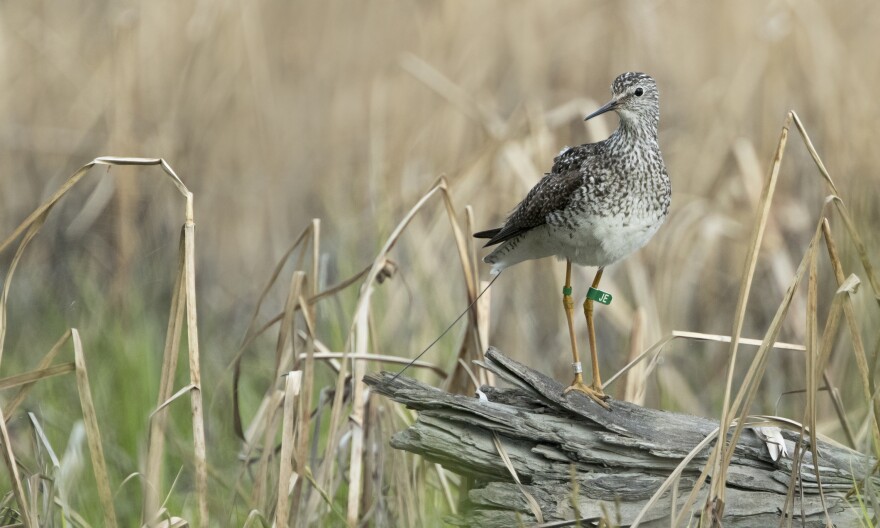Two birds that nested this summer in Alaska, where they were banded with lightweight GPS trackers, are now in the area of an oil spill off the coast of California.
And while it's unclear if the oil has impacted either of those specific two birds — a Lesser Yellowlegs and a Short-billed Dowitcher — the wildlife biologists tracking them are concerned because they represent many other birds threatened by the spill.
One of those biologists is Jim Johnson, with the U.S. Fish and Wildlife Service. Johnson told Alaska Public Media's Casey Grove that there's added worry about the Lesser Yellowlegs and Short-billed Dowitcher because their numbers have already been declining for decades.
Listen here:
The following transcript has been lightly edited for clarity.
Jim Johnson: So we have been studying these species throughout Alaska and the Interior and Southcentral to get a sense for what might be causing the species’ declines in the state. But we also started tracking them to get a better understanding of the threats they encounter during the other nine to 10 months of the year.
And they arrive here late April, mid-May and then initiate the nesting season, and will raise their chicks. And then the adults leave. They begin their migrations before their chicks do. And, in this case, both of these individuals were adults captured with their chicks. The amazing thing is that their chicks will migrate without any direction or without any help from adults. So it's this inherent ability to migrate these crazy distances.
Casey Grove: To be clear, the birds that we're talking about — that have been tracked to the area of this oil spill — are adults, and we don't know if they have gotten hit with the oil or something like that. We don't know if they've been picked up by folks looking for oily shorebirds. But they do sort of represent this big migration that's happening right now in the fall where, like you said, these birds are trying to get to where they need to go for the winter. So it seems like there would be some major concern about that. I mean, this oil spill could not have happened at a worse time for birds, right?
JJ: That's right. The oil spill right now appears to be offshore. However, you know, wind direction could shift, tides could influence the trajectory of this oil spill and could get pushed to shore where it could potentially impact thousands, tens of thousands of shorebirds as well as seabirds. And yeah, I think, even though those two individuals don't appear to be directly affected by this particular oil spill, I think it just highlights one of the many threats that these birds and many thousands more face during these epic migratory journeys.
CG: I guess when it comes to these two species of birds, since you're seeing them kind of in that area, at least, are you concerned about them?
JJ: Yeah, we are concerned overall about those species’ populations and how steeply they're declining. We're scrambling to try to figure out the reasons causing their declines. And one of the things that we're hopeful about is the ability to use this tracking data to not only get a better understanding about their migratory movements, but also using this information to link biologists working across the species’ ranges to more effectively work together to identify threats and to act in ways that will conserve them.


